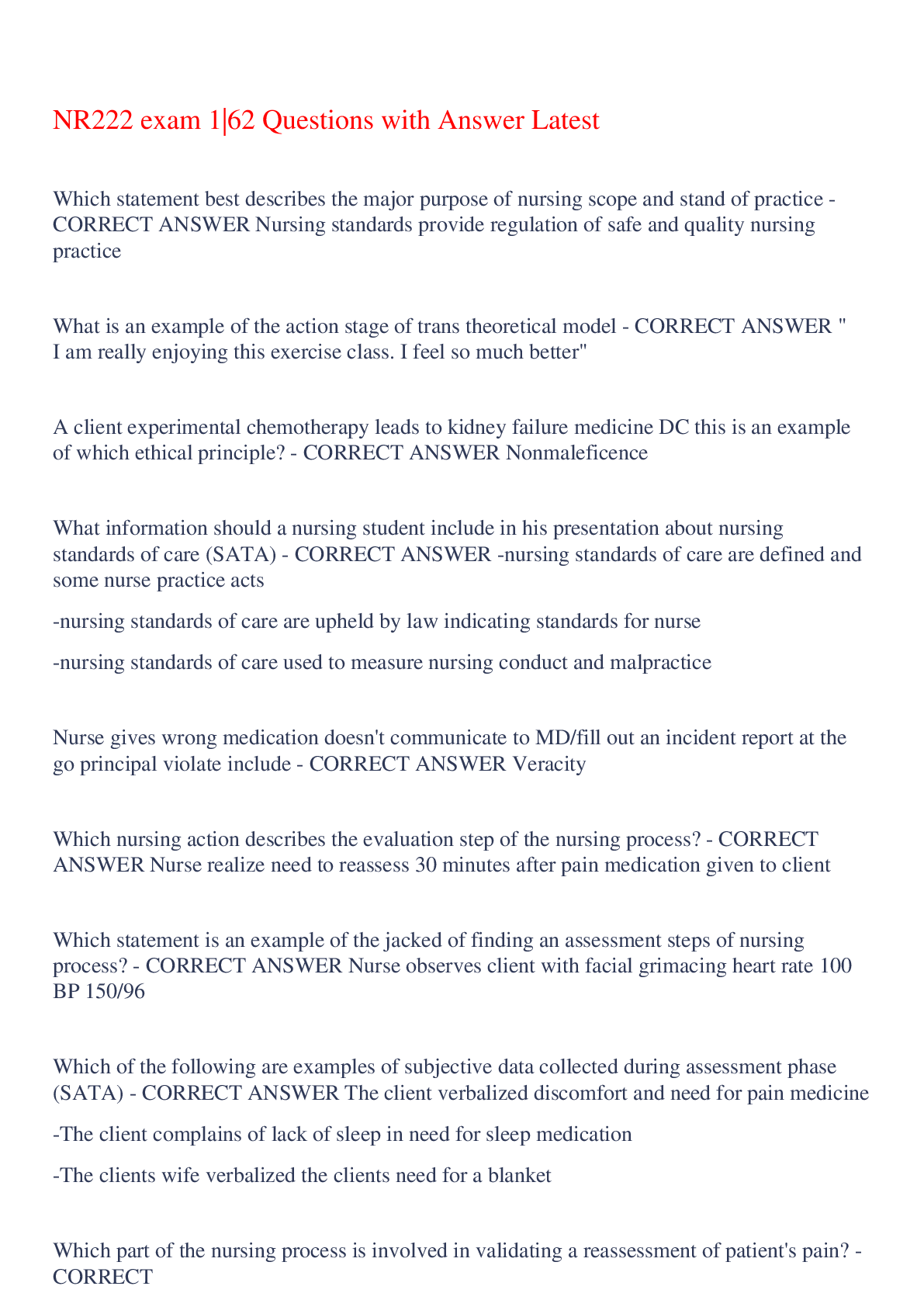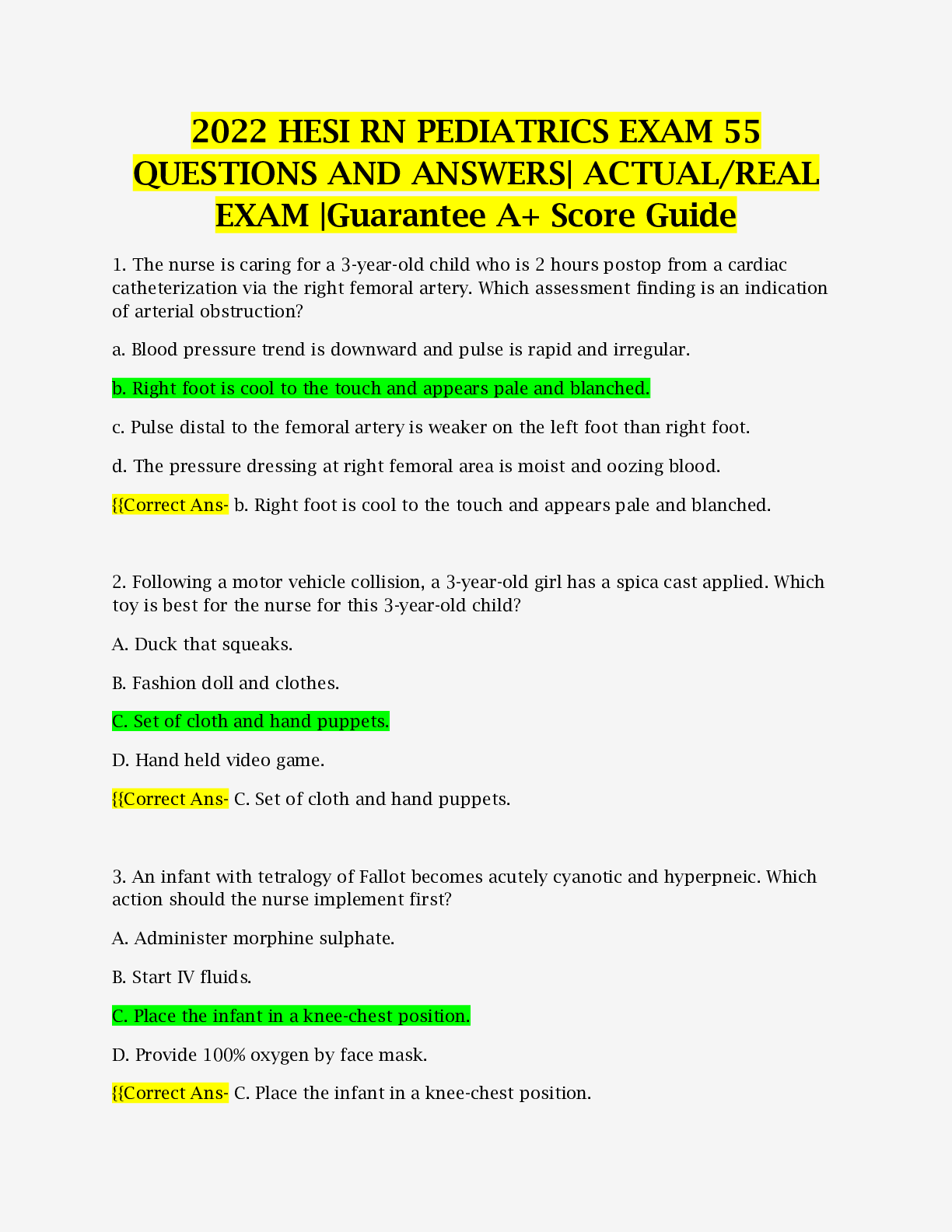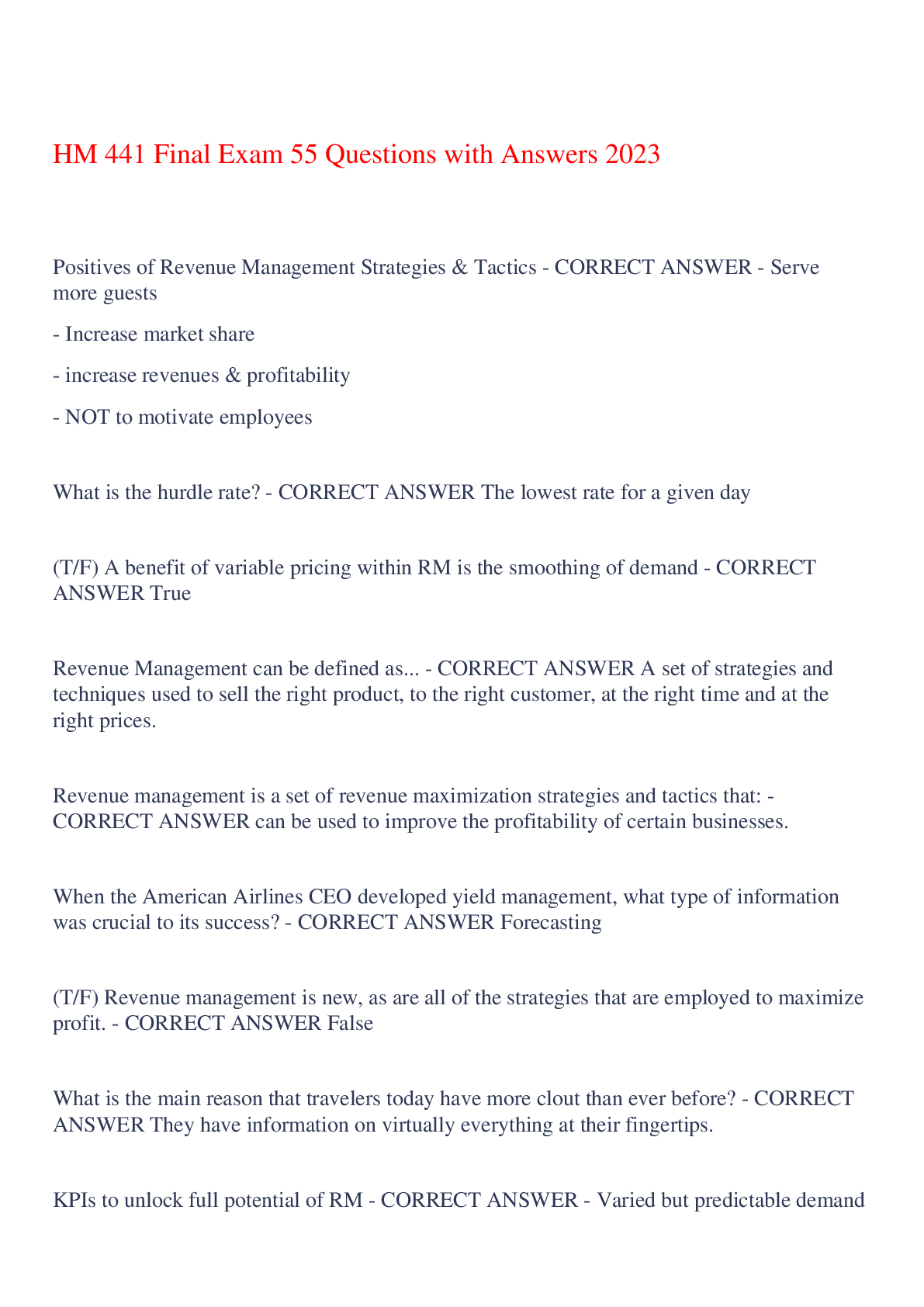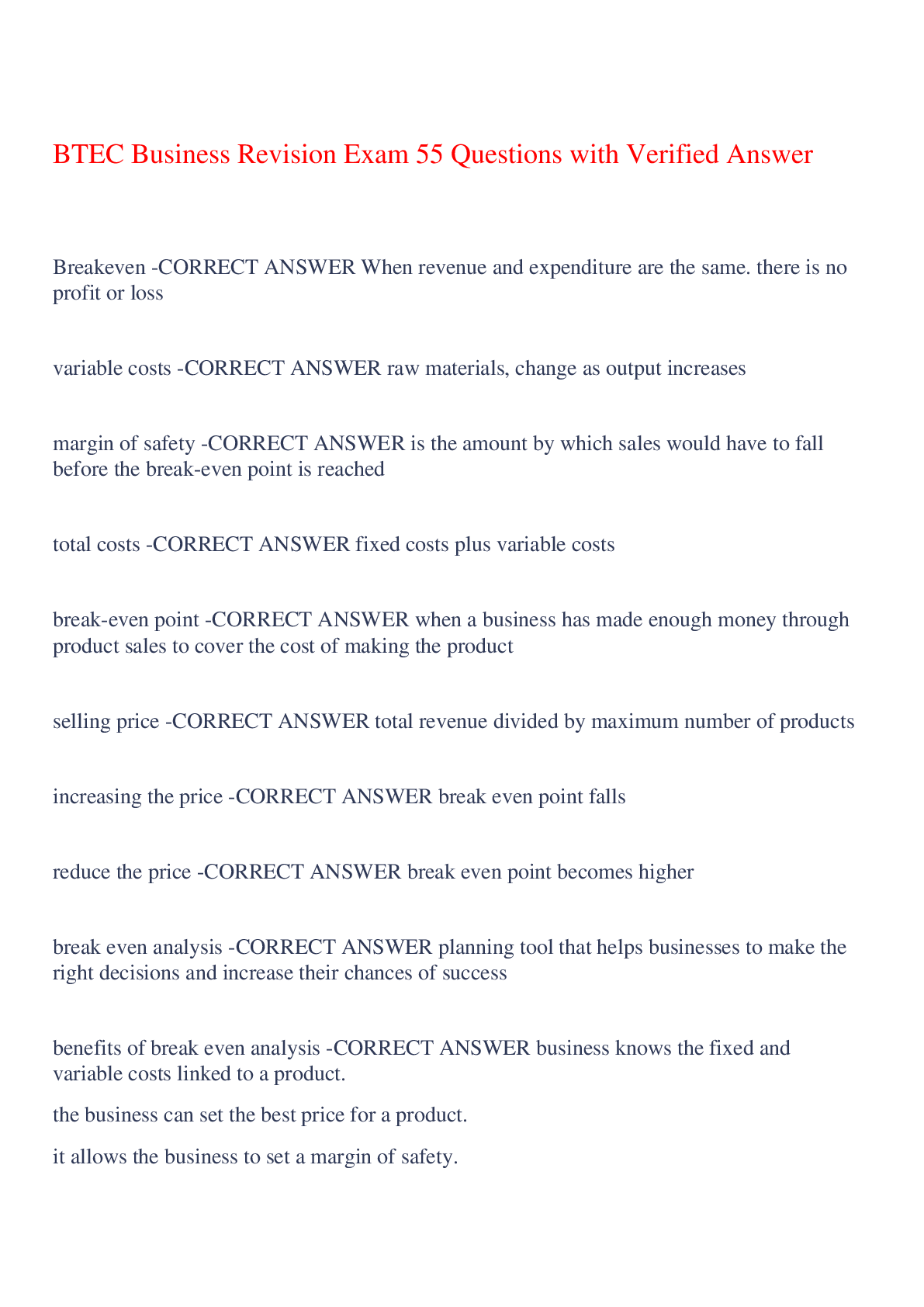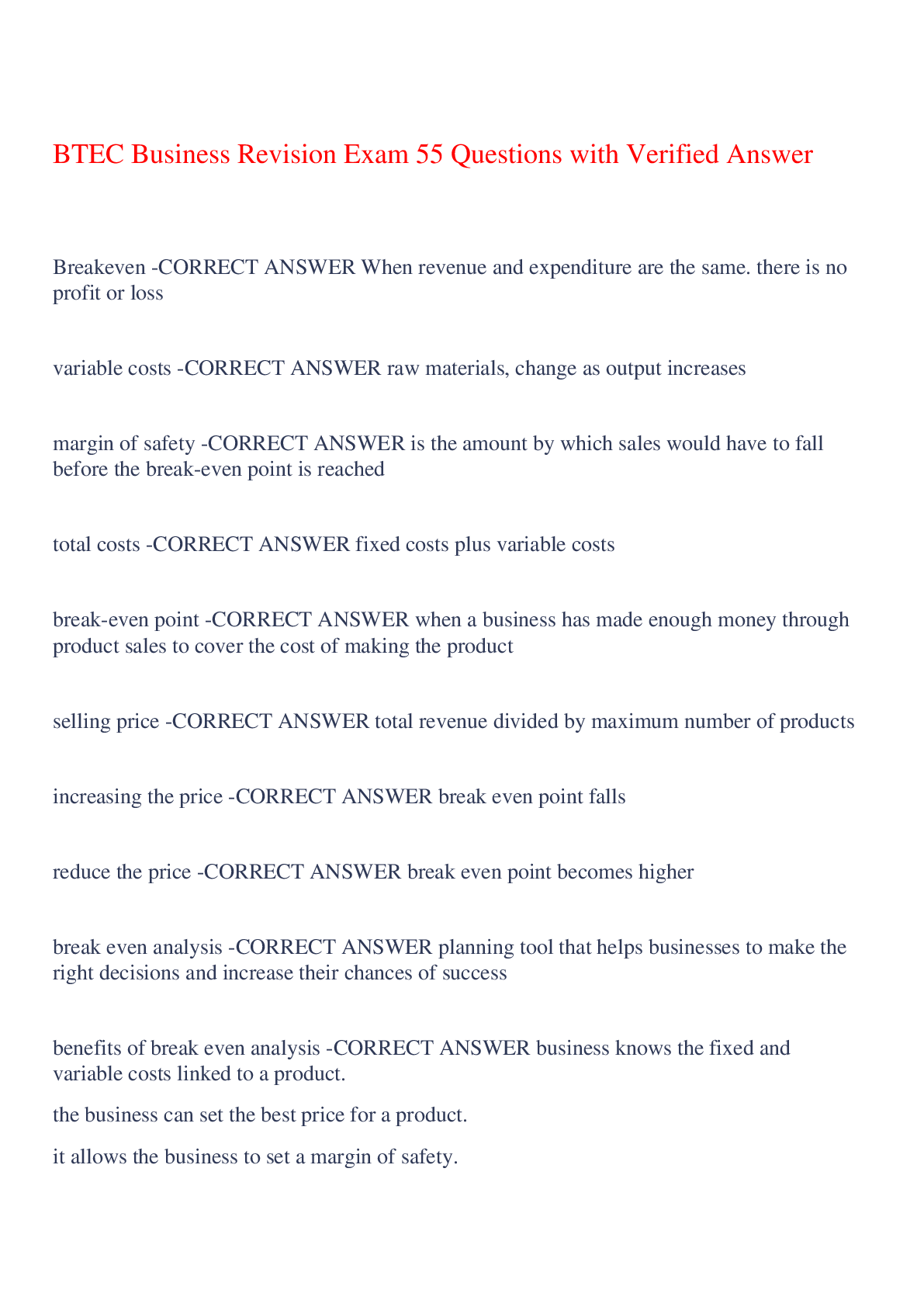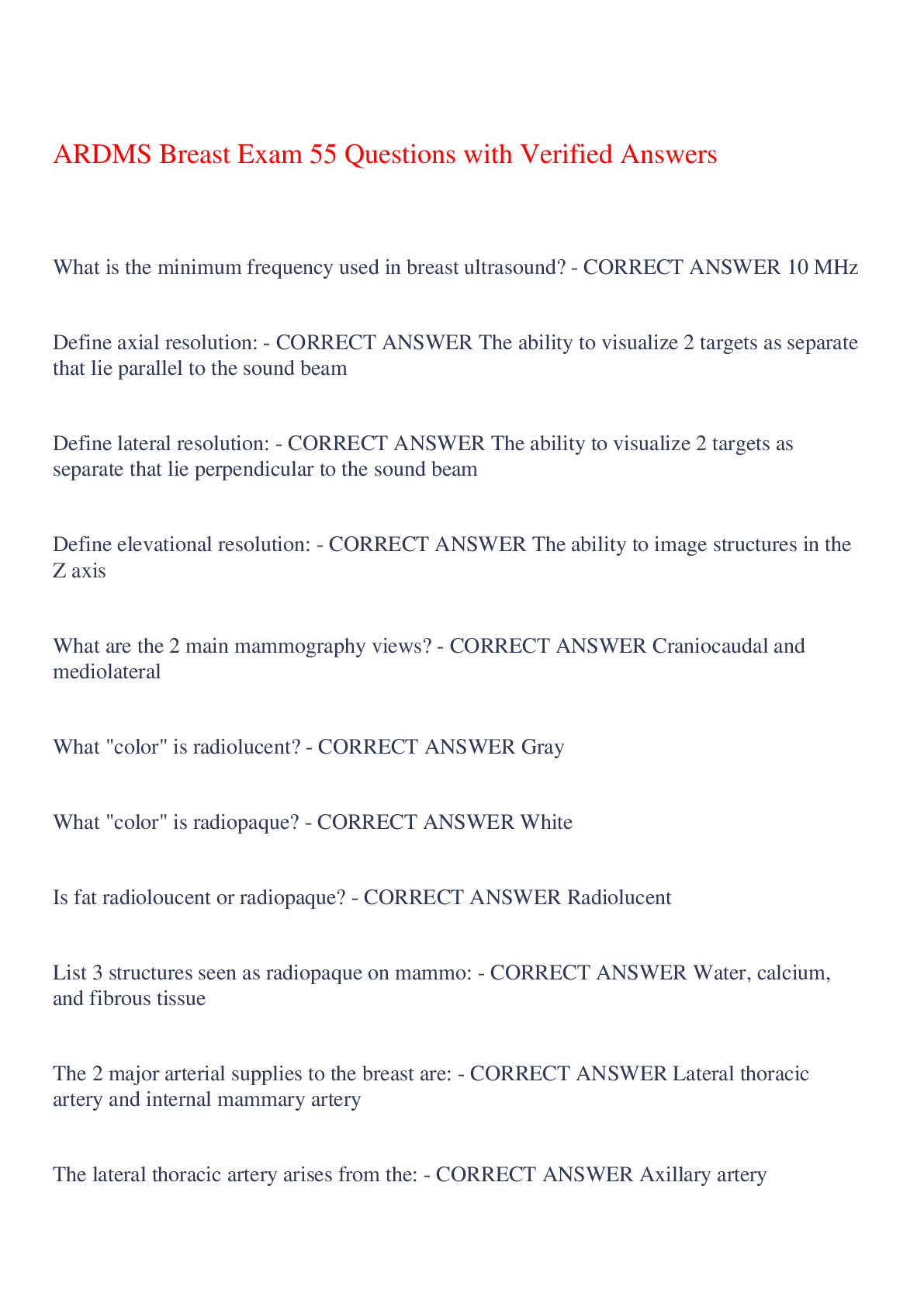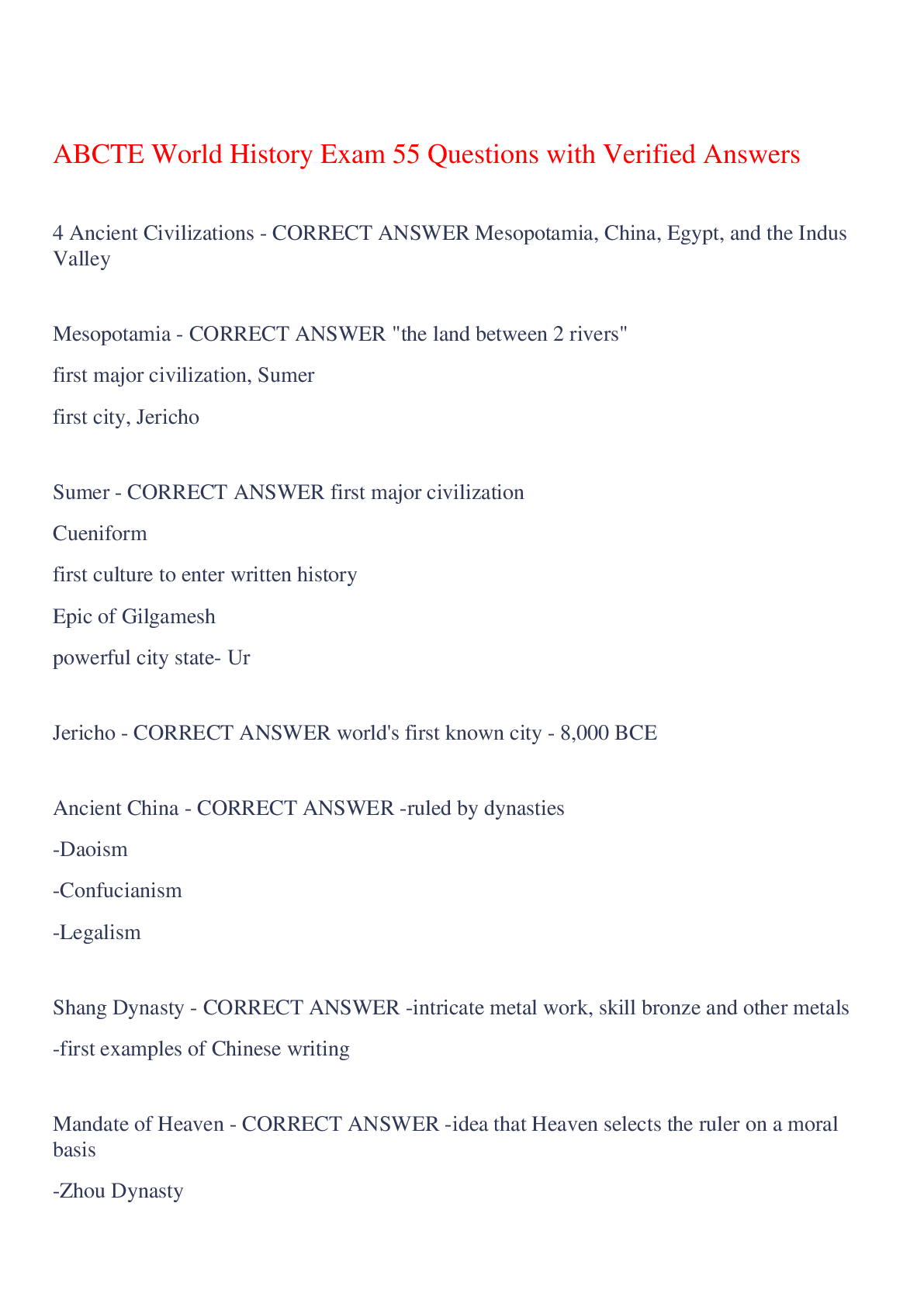Health Care > EXAM > 29 RBS Exam 55 Questions with Answer Latest,100% CORRECT (All)
29 RBS Exam 55 Questions with Answer Latest,100% CORRECT
Document Content and Description Below
29 RBS Exam 55 Questions with Answer Latest 29' RB-S BECCE COLLISON WITH SUBMERGED OBJECT (OR BOTTOM) - CORRECT ANSWER INITIAL ACTION If safe to do so, reduce engine rpm, place in neutral, and no... tify crew of casualty. Determine what was hit, where it is located, and if it can still be seen. Verify current position, depth of water, evaluate situation, and notify the Unit/Operational Commander of the casualty. FOLLOW UP ACTIONS Crewmember checks the bilge for flooding and the outboards for obvious damage. Check for proper engine cooling water circulation by inspecting the discharge indicator. Coxswain trim engines up completely. Crew members inspect lower unit and propellers for damage. If required, check aft engine well void and forward void spaces for flooding via screwed in access hatches, if practical and safe to do so. Coxswain checks for steering damage or limitations. Coxswain checks engine rpm on both engines in gear at various speeds, while crewmember checks for vibration or flooding and to assess damage to the propulsion system. Return to unit at reduced speed, if warranted, to prevent additional damage or vibration. Coxswain reports status of casualty to Unit/Operational Commander. Coordinates with unit for tow or other assistance when risk assessment indicates crew or vessel safety will be jeopardized through continued operations. After returning to base, the boat should be trailered or hoisted to determine the extent of damage, especially if there is a vibration. 29' RB-S BECCE DAMAGE TO COLLAR - CORRECT ANSWER INITIAL ACTION Coxswain notifies and directs the crew to investigate the casualty and report status. Coxswain notifies the Unit/Operational Commander and continues to steer the boat on course, as directed. FOLLOW UP ACTIONS Crewmembers should check the physical condition of the collar. Crewmembers check bolt ropes and screwed down plates to ensure they are securely holding the collar in place. Crewmembers report all findings to the Coxswain. After damage has been assessed, Coxswain reports status of the casualty to the Unit/Operational Commander and determines whether it is safe to proceed with the mission or return to the unit. 29' RB-S BECCE ENGINE FIRE - CORRECT ANSWER INITIAL ACTION Reduce RPM to neutral on both engines. Notify crew of casualty. Verbally identify affected engine. Secure affected engine. If possible, secure fuel to the engines by closing the fuel shutoff valves. Crew member check outboard engine and assess situation. FOLLOW UP ACTIONS Inform Unit/Operational Commander of situation and current position. Secure non-vital electrical power. On coxswain command, crew member combat fire using portable fire extinguisher. Crew member rigs the anchor, as directed by the coxswain. Discuss abandon boat options. Ensure all crewmembers are accounted for and have PPE/survival gear. Discuss operation of Personal Emergency Position Indicating Radio Beacon (P-EPIRB). Inform unit/Operational Commander as situation/risk changes. 29' RB-S BECCE ENGINE HIGH WATER TEMPERATURE - CORRECT ANSWER INITIAL ACTION If safe to do so, reduce engine rpm to clutch ahead. Verbally identify affected engine. Check engine gauges for general alarms. If temperature is not reduced, place affected engine in neutral. Coxswain notifies and directs the crew to investigate the casualty and report status. If safe to do so, have crewmember check for cooling system indicator flow/overboard discharge. Secure affected engine if necessary. Warning: Do not turn the wheel while crewmembers are standing in the engine well. Verify current position, evaluate situation, and notify the Unit/Operational Commander of the casualty. FOLLOW UP ACTIONS Crewmembers ensure fire extinguisher is readily available. Crewmembers carefully check engine cover with the back of the hand to ascertain any abnormal temperature. Crewmembers check around engine cover for evidence of steam. Crewmembers, if safe to do so, tilt engine forward and check cooling water intake screen for obstruction. Crewmembers rig the anchor, as directed by the Coxswain. Crewmembers report all findings and estimated time to repair, if applicable, to the Coxswain. Correct the problem, if possible. Report status of the casualty to the Unit/Operational Commander. Return to unit at reduced speed and/or using a single engine, if required. Coordinate with unit for tow or other assistance when risk assessment indicates crew or vessel safety will be jeopardized through continued operations. 29' RB-S BECCE LOSS OF CONTROL OF ENGINE RPM - CORRECT ANSWER INITIAL ACTION If safe to do so, attempt to reduce rpm to clutch and place in neutral. If engine rpm cannot be reduced, secure the engine using the ignition key switch or by tripping the emergency kill switch. If necessary, stop fuel to the engine using the fuel shutoff valves. Check engine gauges for throttle or general engine alarms. Coxswain notifies and directs the crew to investigate the casualty and report status, cause and, if applicable, estimated time to repair. Verify current position, evaluate situation, and notify the Unit/Operational Commander of the casualty. FOLLOW UP ACTIONS Crewmembers check if Coxswain inputs at the gearshift and throttle control lever correspond to cable movements at the engine throttle arm. If not: Check throttle and shift control cables for damage, including cut cables or binding. Check throttle arm on engine for damage. Check throttle connections on the gearshift and throttle control levers at the port console. Crewmembers check for blown fuses on the engine. Crewmembers report all findings to the Coxswain. Rig the anchor, if applicable. Correct the source of the problem, if possible. Report status of the casualty to the Operational Commander. Coordinate with unit for tow or other assistance when risk assessment indicates crew or vessel safety will be jeopardized through continued operations. 29' RB-S BECCE LOSS OF FUEL OIL PRESSURE - CORRECT ANSWER INITIAL ACTION If safe to do so, reduce rpm to clutch and place in neutral. Verbally identify affected engine or engines. Verify the fuel tank level at the gauge on the Coxswain's console. Coxswain notifies and directs the crew to investigate the casualty and report status. Verify current position, evaluate situation, and notify the Unit/Operational Commander of the casualty. FOLLOW UP ACTIONS Check engine gauges for fuel pressure or general engine alarms. Crewmembers have fire extinguisher on scene/ready. Crewmembers check status of all fuel cut-off valves. Crewmembers check throttle linkages. Crewmembers check the condition of the fuel filters. Replace if suspect and re-prime the fuel system. Crewmembers check the bilge and the engine well deck for fuel. Crewmembers check for the presence of fuel around the engine cover. Crewmembers check engine fuel lines for holes or loose connections. Crewmembers check for blown fuses on the engine. Crewmembers report all findings to the Coxswain. Rig the anchor, if applicable. Correct the problem, if possible. Report status of the casualty to the Unit/Operational Commander. Coordinate with unit for tow or other assistance when risk assessment indicates crew or vessel safety will be jeopardized through continued operations. 29' RB-S BECCE LOSS OF LUBE OIL PRESSURE - CORRECT ANSWER INITIAL ACTION Coxswain immediately checks gauges for oil pressure or general alarms, reduces rpm to neutral and secures the affected engine. Verbally identify affected engine. Coxswain notifies and directs the crew to investigate the casualty and report status. Verify position, evaluate situation, and notify the Unit/Operational Commander of the casualty. FOLLOW UP ACTIONS Crewmembers have fire extinguisher on scene/ready. Crewmembers check the engine well and engines for oil. Crewmembers rig the anchor, as directed by the coxswain. Crewmembers verify oil level on dipstick. Crewmembers check that spin-on oil filter is tightly installed. Crewmembers check oil drain fitting is secure. Crewmembers report all findings and estimated time of repair, if applicable, to the coxswain. Correct the source of the problem, if possible. Report status of the casualty to the Unit/Operational Commander. If the cause is not correctable, do not restart the engine. Return to unit at reduced speed and/or using a single operable engine, if required. Coordinate with unit for tow or other assistance when risk assessment indicates crew or vessel safety will be jeopardized through continued operations. 29' RB-S BECCE STEERING CASUALTY - CORRECT ANSWER INITIAL ACTION If safe to do so, reduce rpm to clutch and place in neutral. Coxswain notifies and directs the crew to investigate the casualty and report status, cause and, if applicable, estimated time to repair. Verify current position, evaluate situation, and notify the Unit/Operational Commander of the casualty. FOLLOW UP ACTIONS Check the 50 amp POWER STEERING circuit breaker on the distribution panel in the aft starboard deck locker to see if it has tripped. Check for steering fluid in the engine well deck, around the front and back of the helm pump, and in the bilge around the steering HPU. Test engines for complete range of motion (full port to full starboard). Ensure that all lines and fittings in the steering system are installed and tight. Report all findings to the Coxswain. Rig the anchor, if applicable. Correct the source of the problem, if applicable. Report status of the casualty to the Unit/Operational Commander. Coordinate with unit for tow or other assistance when risk assessment indicates crew or vessel safety will be jeopardized through continued operations. 29' RB-S BECCE FLOODING - CORRECT ANSWER INITIAL ACTION Notify crew of casualty. Ensure bilge pump circuit breakers are turned ON and control switches are set to AUTO. Verify current position, evaluate situation, and notify Unit/Operational Commander. FOLLOW UP ACTIONS Crewmembers should attempt to find the cause and take corrective actions necessary to control or stop the flooding. Check engine mounts, trim tab mounts, drain plug fittings, and the transducer for obvious leaks. Crewmembers report all findings to the Coxswain. Rig the anchor, if required. Switch the electric bilge pumps to manual operation if they have not activated. Deploy and operate the portable, manual bilge pump if required. After damage has been assessed, Coxswain reports status of casualty to the Unit/Operational Commander and determines whether it is safe to proceed with the mission or return to the unit. 29' RB-S BECCE HARD GROUNDING - CORRECT ANSWER INITIAL ACTION Reduce engine rpm to idle and place in neutral. Notify crew of casualty and assess condition of the crew. Verify current position and depth of water, evaluate situation, and notify the Unit/Operational Commander. FOLLOW UP ACTIONS Coxswain monitors the bilge high water alarm. Crewmembers inspect bilge spaces for obvious flooding and damage. Check for proper engine cooling water circulation by inspecting the discharge indicator. Rig the anchor, if required. Crewmember takes depth sounding all around the boat. Coxswain determines the deepest water, extent of grounding, and potential for underwater damage. Consider present and future state of tide, current, or other weather conditions with regard to re-floating or salvage operations. Coxswain determines the safest direction to deep water, and the method for extracting the boat safely with the least damage. Coxswain trims engines up completely. Crew member inspects lower unit and propellers for damage. Conduct a check of propulsion system integrity prior to attempting re-floating or salvage. Take caution to reduce further damage. Conduct check of steering system integrity. Check for limitations. Take caution to reduce further damage. Coxswain maneuvers into safe water and conduct steering check. Identify limitations and isolate areas of damage. Coxswain checks engine rpm in both neutral and engaged at various speeds. Return to unit or appropriate haul-out facility at reduced speed to prevent additional damage, if necessary. Coxswain reports status of casualty to the Unit/Operational Commander. Coordinates with unit for tow or other assistance when risk assessment indicates crew or vessel safety will be jeopardized through continued operations. 29' RB-S BECCE LOW POWER OR LOSS OF POWER TO COMMUNICATIONS NAVIGATION EQUIPMENT - CORRECT ANSWER INITIAL ACTION Coxswain notifies crew of the casualty, and if able, notifies the unit/Operational Commander. Coxswain directs the crew to investigate the casualty and report status. FOLLOW UP ACTIONS Verify alternator output on gauges for each engine. If casualty is limited to a specific system or piece of equipment, crewmembers perform the following: Check status of applicable circuit breakers and switches for the affected equipment. Check for blown fuses on the secondary fuse panels inside the port console, if applicable. If all systems and equipment are suffering from low or no power, crewmembers perform the following: Check battery switch positions. Check status of 90 amp ISO FEED and 150 amp HOUSE DIST FEED breakers on the distribution panel in the aft starboard deck locker. Check the 150 amp MAIN BREAKER on the house distribution panel. Secure engines and check the condition of the engine alternator belts and alternator electrical connections. Check for a blown 150 amp AGC fuse on the engine. Visually check the condition of battery terminals and electrical connections, the battery isolator, power posts, and battery switches. Crewmembers report all findings, cause and, if applicable, estimated time to repair, to the Coxswain. Parallel both engine batteries and the house battery, using the battery switches, if required. A BECCE drill will automatically be deemed unsatisfactory if any of the following conditions are met: - CORRECT ANSWER Jeopardizing safety of passengers and crew (ie. kill switch, jewelry, etc.) Unsafe operation or navigation of the boat Failure to wear and use serviceable crew safety and survival equipment Failure to use applicable operational risk management and updating as necessary AUTOMATED PLOTTING Drill - CORRECT ANSWER PREPARATIONS Enter destination position and additional waypoints as needed to ensure safe navigation, save as new route. State estimated time to complete route. (S) Verify alarms are set per Command Navigation Standards. (S) Brief crew on mission, specific job responsibilities, and forecast environmental conditions. Coxswain verbally assign lookout. Make departure within 30 minutes. UNDERWAY NAVIGATION Operate vessel IAW Navigation Rules & Regulations (lights, sound signals, etc.). (S) Corrected chart on hand (if required) per Command Navigation Standards. (S) Electronic Navigation System: (1) Display set per Command Navigation Standards. (S) (2) Activate the route. (S) (3) Verify fix position IAW Command Navigation Standards zones & intervals. (S) RADAR: (1) Tune/Adjust RADAR for conditions. (2) Proper use of radar to determine risk of collision IAW Navigation Rules & Regulations. (S) (3) Display waypoint information on radar screen. Begin navigation at 1st waypoint, at planned speed. Navigate within Command Navigation Standards XTE with exception of maneuvering for safety. (S) Report navigation situation to crew (i.e. distance left/right of track, time to go to turn, nearest hazard to navigation, depth below keel, recommended course) at least once each leg. Update remaining ETA, if necessary, prior to the start of the last leg. (S) Arrive at destination position within 100 yards and +/- 5 min. of ETA. (S) DEWATERING (CORE DRILL) - CORRECT ANSWER ACTIONS Brief crew and assign duties. (S) Account for all persons from the distressed vessel upon arrival and remove them if necessary. (S) Rescue any persons in extremis and address medical needs. Check the sinking vessel for hull damage or other sources of flooding. (S) If source of flooding is determined, perform procedures to reduce water flow into distressed vessel. (S) Pass a portable pump directly to distressed vessel (come alongside or use mooring lines). (S) Make portable pump ready for use. (S) Conduct risk assessment before placing CG personnel onboard distressed vessel. (S) Before entering any flooded compartment/vessel, every attempt to secure electrical power should be made. (S) Start portable pump and obtain/maintain suction within 6 pulls. (S) Dewater distressed vessel. Determine if flooding was controlled. Safely identify source of flooding. Safely reduce or stop flooding. Set flood watch. (S) Keep unit advised of status. EMERGENCY ENGINE RESTART (Outboard Engine Only) - CORRECT ANSWER INITIAL ACTION Coxswain notifies crew of inadvertent engine shutdown. Visually checks and observes pulled kill switch lanyard. (S) Coxswain ensures both engine throttles are in NEUTRAL position. (S) Flip toggle switch to the up/run position, restart engines within 30 seconds. (S) FOLLOW UP ACTIONS Proceed a minimal distance to safe water and reinstall kill switch lanyard. MAN OVERBOARD (MOB) RECOVERY - CORRECT ANSWER INITIAL ACTION Spread the alarm "MAN OVERBOARD (PORT/STBD side, the bow, the stern)!" (S) Person who observes PIW maintains sight of PIW and continuously points (open handed) to PIW. (S) Position recorded by pressing the appropriate button on the Chart Plotter/GPS receiver. (S) Sound 5 or more short blasts. (S) Deploy a ring buoy with strobe light (or anything that floats) over the side. (S) RECOVERY Coxswain briefs crew on recovery procedure including which side of boat the recovery will occur. (S) Recovery crewmember makes preparations for the pickup (prepare heaving line, surface swimmer, stokes litter etc.). Upon command, Pointer moves to assigned position and assists with pickup of PIW. Bring the PIW alongside boat and pull the PIW aboard . Recover PIW within 3 minutes. (S) Keep Unit/Operational Commander advised of status FOLLOW UP ACTIONS Demonstrate appropriate first aid. Describe actions to take if PIW is not located. Towing (Core Drill) - CORRECT ANSWER PREPARATIONS: Establish communications with distressed vessel (use CG working freq, provide ETA, advise people to don PFDs, determine material condition of vessel and get details of deck layout / fittings / backing plates / size of cleats, determine physical condition of people of distressed vessel, ask distressed vessel if anything has changed since initial contact with CG). (S) Conduct boat crew briefing. (S) Make up tow rig. Set up the deck with equipment staged and ready, attach two heaving lines to the tow rig, and assign crew members who will be on the heaving lines, tow bitt, and line handler. Perform on scene assessment. (S) Before the tow, brief disabled vessel on the following: (S) Describe the towing vessel approach Tell towed vessel when and how tow rig will be passed Explain hook up procedure / tow rig connection Safety instructions / line handling STERN TOW: Maneuver towing boat into an optimum position. Pass heaving line/tow line to disabled vessel. (S) Pay out tow line and tend line away from boat's propulsion. (S) Coxswain instructs crewmember to take working turn on the bitt after towline is secured on disabled vessel. (S) Pay out appropriate length of towline. Adjust scope of towline to put towed vessel in step. Coxswain instructs crewmember to make up the bitt. (S) Set and maintain tow watch. (S) Notify Unit of towing status. Once disabled vessel in under tow, brief the towed vessel the following: (S) 1.Emergency break away procedures 2.Operating instructions (steer behind, etc.) 3.Communications schedule Establish back up emergency signals Display proper navigation lights and sound signals for weather conditions. (S) Install chaffing gear as needed. Maintain safe towing speed. ALONGSIDE TOW: Brief crew on procedures. (S) Brief disabled vessel on procedures. (S) Prepare deck for alongside tow (i.e. rigged fenders and make alongside lines ready). Slow speed, break down tow bitt, shorten the tow, haul slack towline aboard, and tend line away from boat's propulsion. (S) Rig lines (bow, stern, towing strap, backing line if available) for alongside tow appropriately. (S) Energize appropriate navigation lights, as needed. (S) Notify Unit of towing status. Discuss mooring instructions with crew and disabled vessel. (S) Position a crewmember in a good position as a lookout aboard towed vessel on approach (if necessary). Safely moor assisted vessel. (S) CREWMEMBER PILOTING PROFICIENCY - CORRECT ANSWER INITIAL ACTION Stop (maintain station) or anchor to assess situation. (S) Verify eNav displayed position utilizing radar, fathometer, terrestrial ranges, ATON or seaman's eye. (S) Inform unit of situation and risk assessment. (S) FOLLOW UP ACTIONS Brief crew on mission, specific job responsibilities, and environmental conditions. (S) Verbally assign lookout. (S) Discuss courses of action and risk vs. gain of navigating to safe mooring, RTB, anchoring, etc. (S) UNDERWAY NAVIGATION Operate vessel IAW Navigation Rules & Regulations (lights, sound signals, etc.). (S) Corrected chart on hand (if required) per Command Navigation Standards. (S) Electronic Navigation System: (1) Create route, change route or reverse route. (S) (2) Activate the route. (S) (3) Verify fix position IAW Command Navigation Standards zones & intervals. RADAR: (1) Tune/Adjust RADAR for conditions. (2) Proper use of radar to determine risk of collision IAW Navigation Rules & Regulations. (3) Display waypoint information on radar screen. Provide course guidance to helmsman. (S) Report navigation situation to crew (i.e. distance left/right of track, time to go to turn, nearest hazard to navigation, depth below keel, recommended course) at least once each leg.. Arrive at destination utilizing evaluation criteria. (S) SEARCH PATTERNS (DRIFTING) CORE DRILL - CORRECT ANSWER PREPARATIONS Brief crew on initial SAR check sheet items. Assign lookouts, coordinate their areas of responsibility, and provide target description. (S) If platform has dual steering stations, use the exposed station. Open windows/Roll-up weather curtains (if installed), as necessary. SEARCH PATTERN EXECUTION From the established CSP, estimate direction of set. (S) Calculate all compass courses, state starting speed over ground/times to turn for search pattern. (S) Deploy datum marker and mark position into eNav (VS only). (S) Commence Search in estimated direction of set. (S) Advise Unit/SMC/Operational Commander of on scene WX and start time of pattern. Set speed and do not adjust throttles after first leg. (S) Commence all turns to the right, within + or - 15 seconds of calculated times to turn. (S) Boat crew demonstrates proper visual scanning techniques. Steer on datum marker when on 3rd, 6th, and 9th (VS only). (S) Enter final position of datum into eNAV immediately upon completing final leg (VS only). (S) Complete minimum five search pattern legs (SS only). (S) Calculate set and drift upon completion of search pattern. Notify Unit/SMC/Operational Commander of completion of search pattern. Pass final position of datum, set, and drift. Use illumination without compromising night vision (if at night). Length at Waterline 29 RBS - CORRECT ANSWER 26 FT 2 inches Maximum Length of Boat in Water 29 RBS - CORRECT ANSWER 31 FT 8 inches Length Overall on Trailer 29 RBS - CORRECT ANSWER 36 FT 10 inches Beam Overall 29 RBS - CORRECT ANSWER 8 FT 5 inches including collar Offset for Transducer (to bottom of lowered outboard) 29 RBS - CORRECT ANSWER 18 inches (1.5 FT) Operational Draft 29 RBS - CORRECT ANSWER 2 FT 9 inches Minimum Draft 29 RBS - CORRECT ANSWER 1 FT 10 inches Highest Point Above Waterline (Mast Platform UP: Searchlight) 29 RBS - CORRECT ANSWER 9 FT 10 inches Highest Point When On Trailer (Mast Platform UP: All-around Light) 29 RBS - CORRECT ANSWER 13 FT 7 inches Highest Fixed Point When On Trailer (Mast Platform DOWN: Cabin Top) 29 RBS - CORRECT ANSWER 10 FT 6 inches Total Persons On Board (POB) Capacity 29 RBS - CORRECT ANSWER 10 Fuel Tank Capacity (Gasoline 29 RBS - CORRECT ANSWER 110 gallons Fuel Tank Capacity (Diesel) 29 RBS - CORRECT ANSWER 3 gallons Propellers 29 RBS - CORRECT ANSWER 15 3/8 x 18P, 3 blade propeller (counter rotating) Outboards 29 RBS - CORRECT ANSWER Twin Honda 225 hp, 4-stroke Outboards Boat Weight (fully outfitted, fuel, no crew) 29 RBS - CORRECT ANSWER 8,400 lbs Boat Maximum Weight (fully outfitted, 10 POB) 29 RBS - CORRECT ANSWER 11,800 lbs Trailering Weight (fully outfitted, fuel, trailer, no crew) 29 RBS - CORRECT ANSWER 9,960 lbs (approximate) Maximum Speed 29 RBS - CORRECT ANSWER 45 kts Cruise Speed 29 RBS - CORRECT ANSWER 25 kts at 3250 rpm Maximum Range at Cruise Speed 29 RBS - CORRECT ANSWER 200 nautical miles (nm) Operating Outside Air Temperature Range 29 RBS - CORRECT ANSWER 0-135°F Operating Water Temperature Range 29 RBS - CORRECT ANSWER 28-105°F Maximum Operating Winds 29 RBS - CORRECT ANSWER 25 kts Maximum Operating Seas 29 RBS - CORRECT ANSWER 6 FT Maximum Towing Capacity 29 RBS - CORRECT ANSWER 10 displacement tons Maximum Operating Distance Offshore 29 RBS - CORRECT ANSWER 10 nm Anchor Locker (outfit) 29 RBS - CORRECT ANSWER 7 lbs Danforth Anchor 9 ft Anchor Chain Anchor Line- 150 ft X 1.5 in Spare towline - 150 ft X 2 1/3in 2 Fenders- 5.5in X 20in 2 Mooring Lines- 30 ft 2 ammo box bungee cords Anchor Bag Cuddy Cabin (outfit) 29 RBS - CORRECT ANSWER 1 Fire extinguisher- 2.5 lb ABC Tow light mast 2 Flashlights Portable airhorn w/ spare canister Spare killswitch First Aid kit Flag mast Handheld spotlight Windshield screen Main Cabin (oufit) 29 RBS - CORRECT ANSWER 2 Binoculars Kill Switch Fire extinguisher(aft port seat) Throw bag (aft stbd seat) Boat crew survival vest(min. 3) 5 Crew comms headsets Main Cabin Chart table (outfit) 29 RBS - CORRECT ANSWER Boat Operators handbook Emergency egress hammer tool Nav kit Gear bag with: 3/8 in screwpin shackle 9 ft Skiff hook line p-6 tie down strap 2 bungee cords Aft weather deck (outfit) 29 RBS - CORRECT ANSWER Towline- 150ft X 2 1/3in Tow reel cover Throw Bag 24 in life ring w/ float light Port aft deck locker (outfit) 29 RBS - CORRECT ANSWER 4 Mooring lines- 2in X 30 ft 2 Fenders- 5.5 X 20 in Portable bilge pump - 5 GPM Bucket Center Aft deck locker 29 RBS - CORRECT ANSWER Spare parts tool bag: -Main cabin hand pump -2 Quarts 10w30 Oil -Sea Star Steering Fluid -Phillips and Slotted screwdrivers -Metric wrench set 10mm-20mm -Pliers -Rags -Assorted Fuses -Hand pump for gunner seat -Spark Plug w/ 4 in extension - Prop Nut Wrench BECCES that require securing affected engine during initial action - CORRECT ANSWER -Engine Fire -High water temp( after checking discharge) -Loss control of engine RPM -Loss of lube oil pressure RBS fixed height - CORRECT ANSWER [Show More]
Last updated: 10 months ago
Preview 1 out of 26 pages
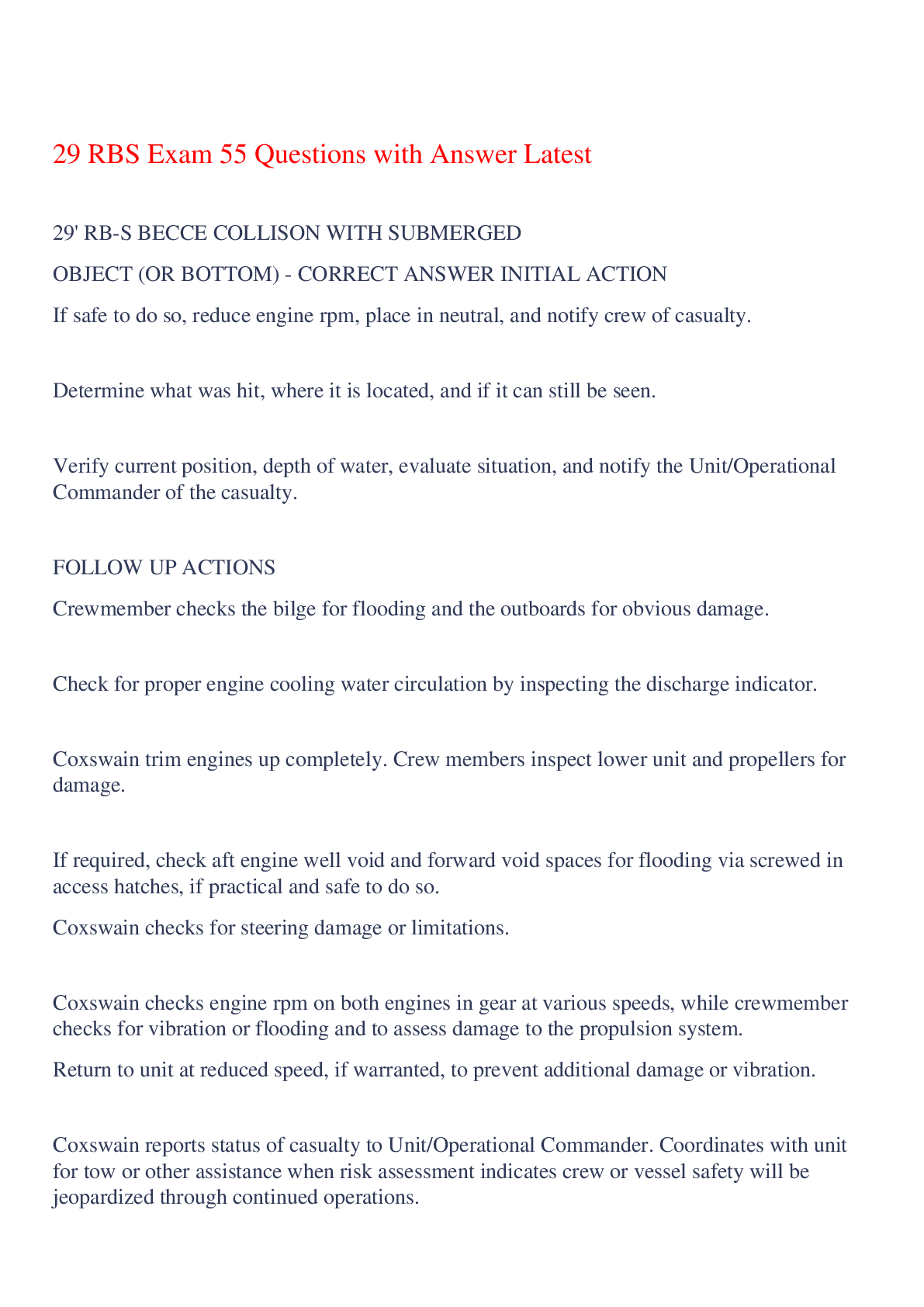
Reviews( 0 )
Document information
Connected school, study & course
About the document
Uploaded On
Jun 17, 2023
Number of pages
26
Written in
Additional information
This document has been written for:
Uploaded
Jun 17, 2023
Downloads
0
Views
58







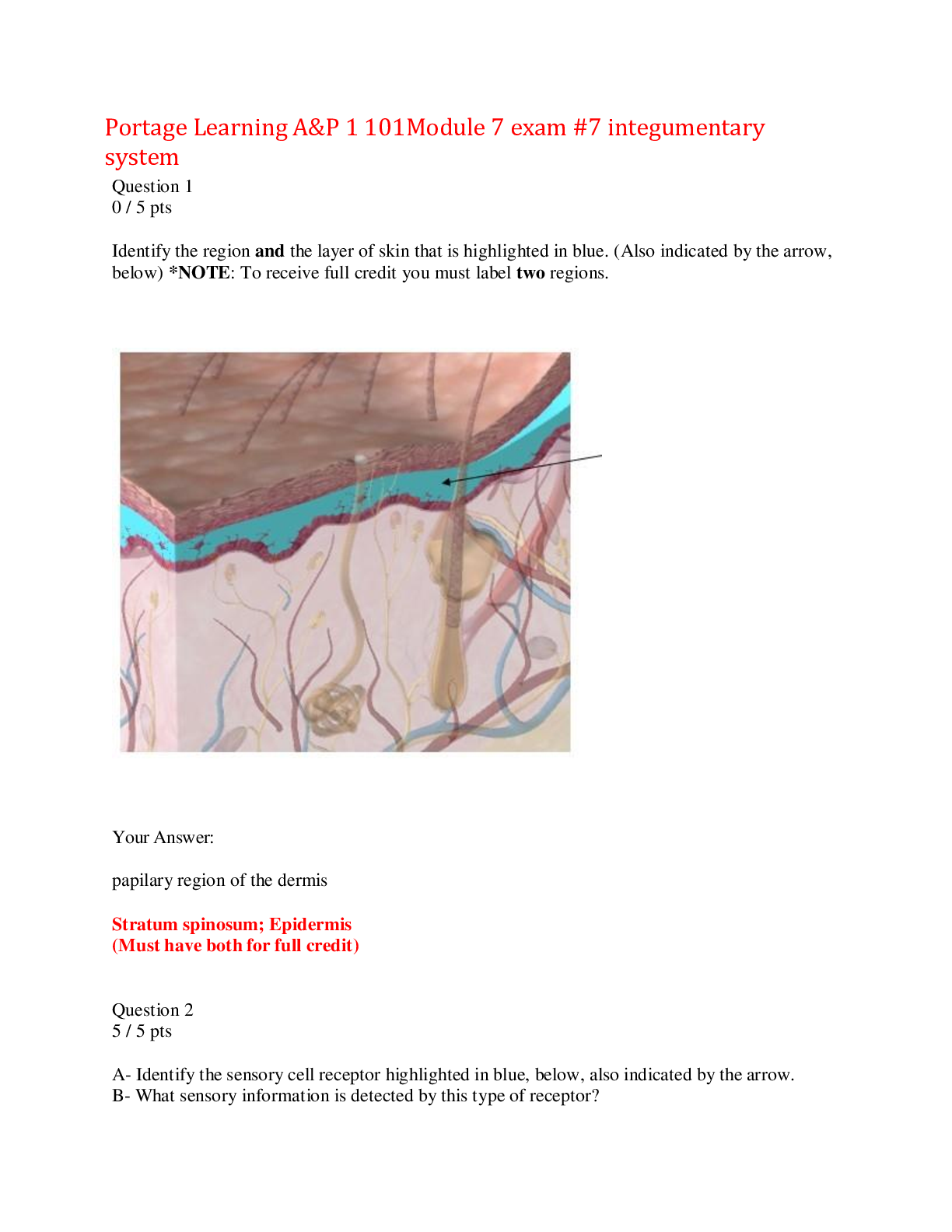







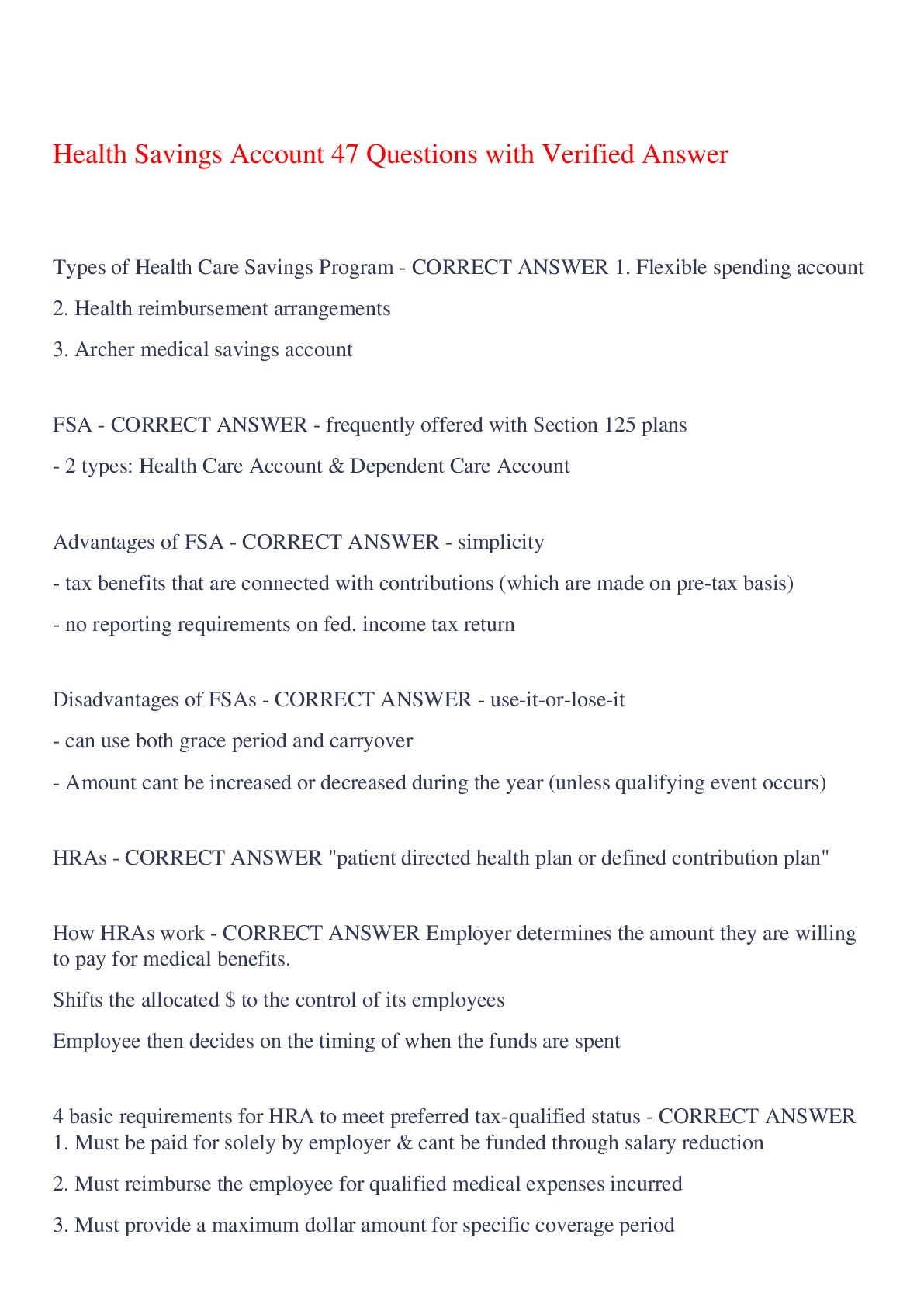


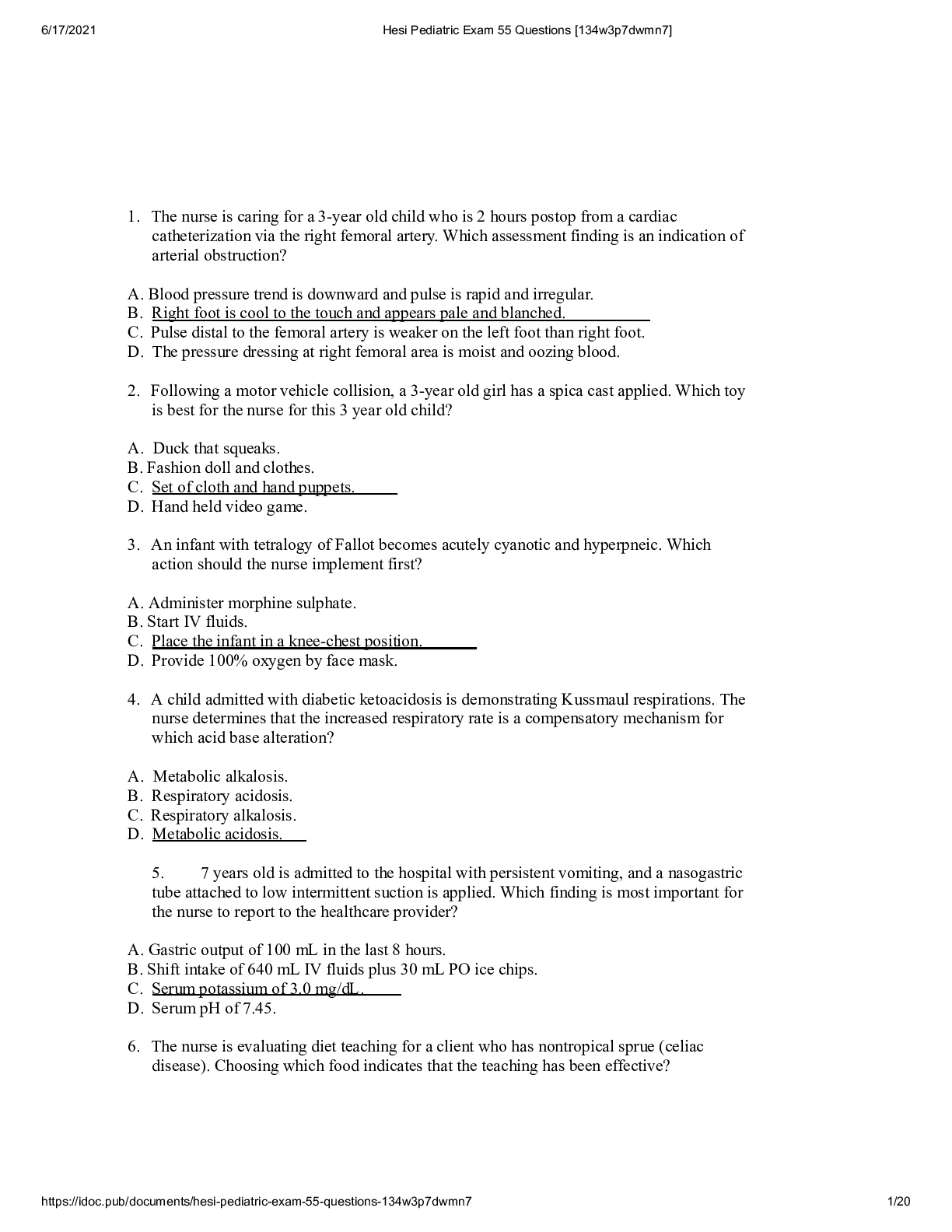


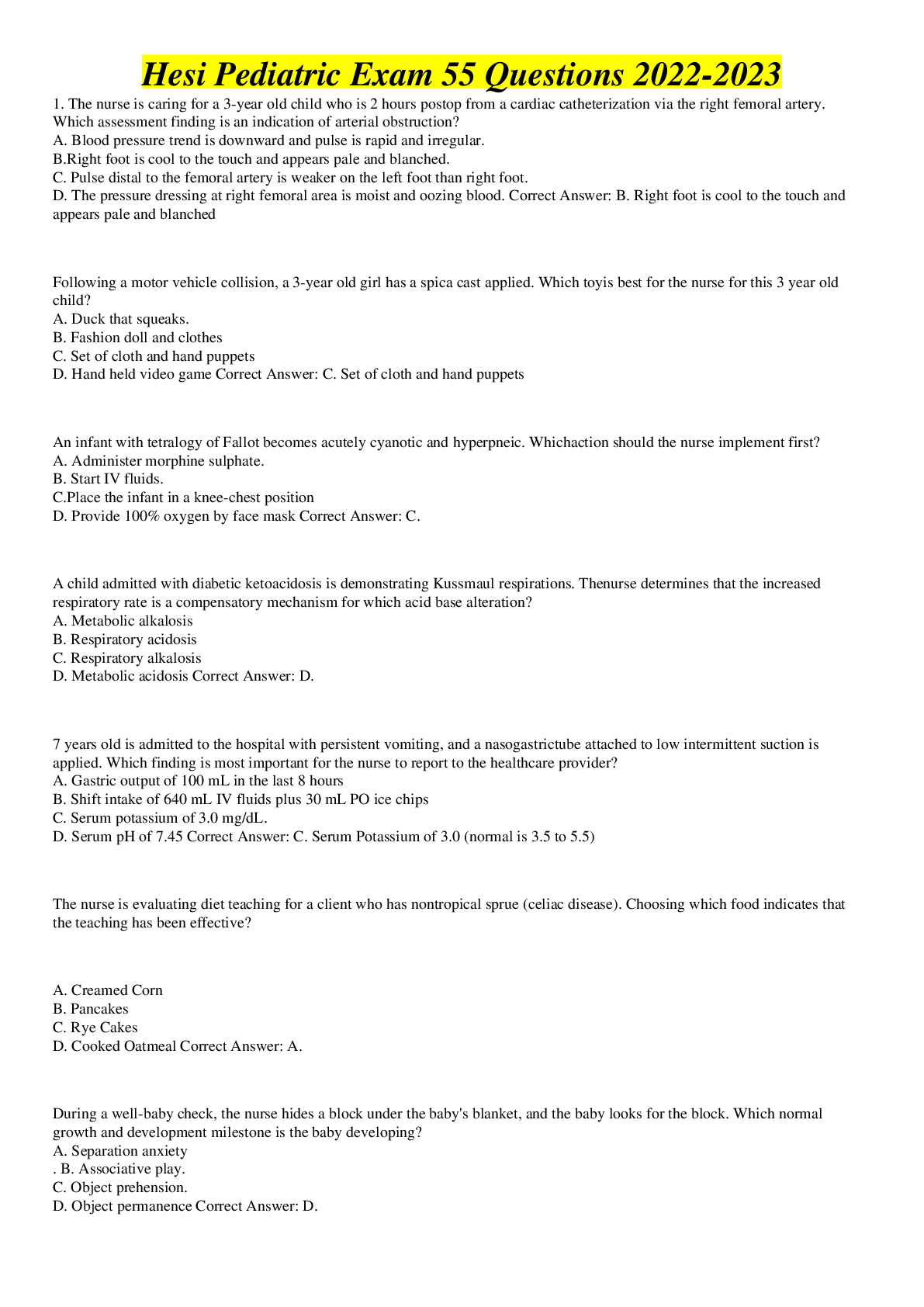
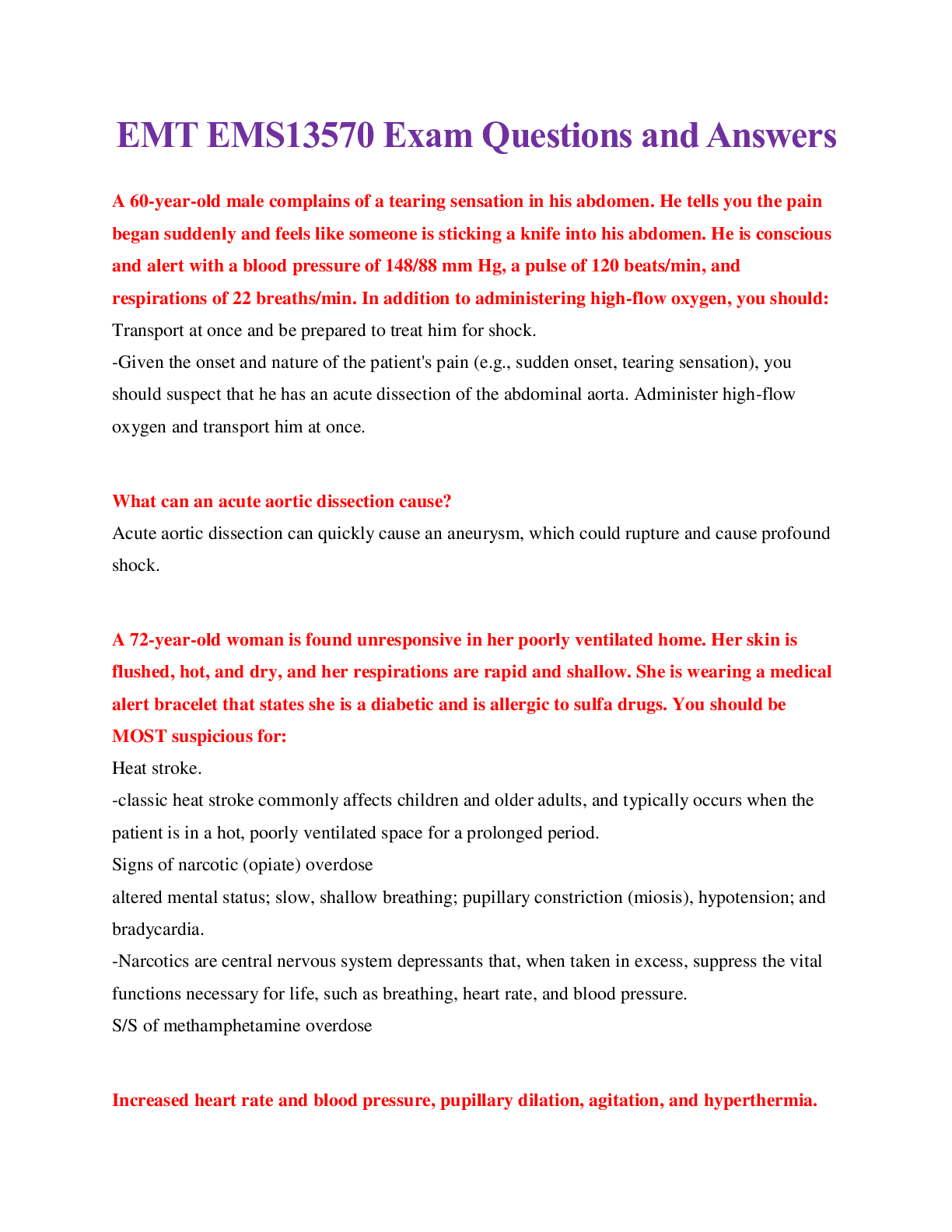
.png)


